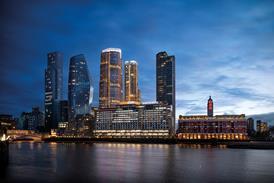Cities across the globe have the potential to reinvent themselves in radical new forms, but planners, architects and governments seldom harness these possibilities, architect Sir Terry Farrell has claimed.
Speaking at the annual lecture of the Royal Town Planning Institute last week, Farrell outlined his vision for high density cities with better transport links and public spaces.
He said that high-speed, long-distance transport made cities much better connected than ever. He said: ŌĆ£In the past, transport was a blight on a place. Now a transport node is the place for business, for meetings and a good place to be.ŌĆØ He said airports had become a new kind of city, and cited a transport hub in South Korea that is being planned from the outset as a new town.
Farrell added that cities were becoming denser, but that that was not a bad thing. He said safety and crime had nothing to do with density, and pointed to Hong KongŌĆÖs low crime record.
Using this argument, he suggested that 90% of all the 200,000 homes planned for the Thames Gateway could easily be concentrated in east London, leaving the estuary lands as the capitalŌĆÖs park.
Turning to architecture, Farrell said: ŌĆ£For too long the ŌĆśwow factorŌĆÖ has distracted too many planners and architects.ŌĆØ Rather, it is the spaces in between buildings that are ŌĆ£the very essence of public life and what our cities are made ofŌĆØ. He added that by concentrating on these spaces, John Nash, James Craig and Baron Haussmann had created ŌĆ£collective magnificenceŌĆØ in London, Edinburgh and Paris.
























No comments yet